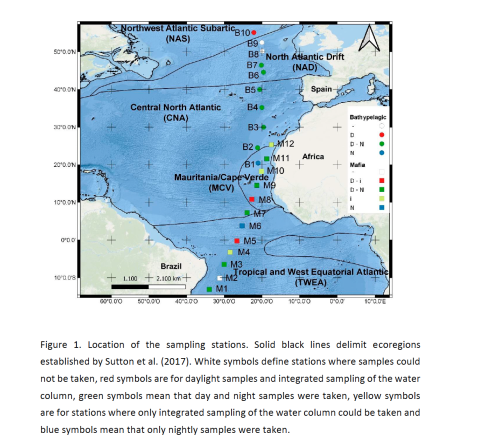Ph.D. Program in Oceanography and Global Change at the Canary Islands, Spain
Submitted by ignacio on Mon, 05/23/2022 - 14:06

The micronekton community of pelagic shrimps was studied by means of taxonomic composition, abundance and biomass analysis, across a latitudinal transect in the Atlantic Ocean from off Brazil coast (15ºS) to the south of Iceland (55ºN). Total abundance and biomass were sampled by Mesopelagos net with a mouth opening of 5 x 7 m and a total length of 58 m. Vertical variation of temperature, conductivity, pressure, dissolved oxygen and fluorescence were recorded by CTD profiler. Different depth levels were established and samples were taken during the daytime and nightly at each sampling station. A total of 132 species were identified belonging to 10 different families. Euphausiidae was the most abundant family and Acanthephyridae was the family that most contributed to the total biomass. Pelagic shrimp assemblages, related with latitudinal changes in biomass and abundance, agreed with previous delimitation of ecoregions in the Atlantic Ocean. Diel vertical migrations were detected along the transect, with a maximum of biomass within the Oxygen Minimum Zone (OMZ) during the daytime. According to the information obtained of Euphausiacea, Decapoda and Lophogastrida biomass in both cruises, we have estimated a total of 22.9 tC in the Atlantic Ocean.




Add new comment